197
MUSIC
Aims:
1. To encourage creative expression in music.
2. To develop the powers of musical appreciation.
One of the three following syllabuses may be
offered:
(A) Indian Music (Hindustani) (872).
(B) Indian Music (Carnatic) (873).
(C) Western Music (874).
(A) IDIA MUSIC (HIDUSTAI) (872)
(May not be taken with Western Music or Carnatic Music)
CLASSES XI & XII
The Syllabus is divided into three parts:
Part 1 (Vocal), Part 2 (Instrumental) and
Part 3 (Tabla). Candidates will be required to offer
one of the parts of the syllabus.
There will be two papers: Paper 1 (Theory) of
100 marks and Paper 2 (Practical) of 100 marks.
Candidates will be required to appear for both the
papers from one part only.
In the Theory paper candidates will be required to
attempt five questions in all; two questions from
Section A (General) and EITHER three questions
from Section B (Vocal or Instrumental) OR three
questions from Section C (Tabla).
CLASS XI
PART 1: Vocal Music
PAPER 1 (Theory)
A. 1. Musical Sound - Nad, Shruti, Swar, Saptak
(Mandra, Madhya, Tar) That, Rag, Jati.
2. Swars - Tivra, Komal, Shudha, Prakrat, Vikrit
Vadi, Samvadi, Anuvadi, Vivadi, Varjya
Vakra, Grah, Ansh, Nayas Swaras.
3. Types of Ragas - Odava, Shadava,
Sampoorna, Ashraya, Janak, Janya.
4. Varna - Sthayi, Arohi, Avrohi and Sanchari.
5. Alankar - Palte, Aroha, Avroha.
6. Tal - Matra, Sam, Tali, Khali, Bhag, Vibhag,
Theka, Avartan, Dugun, Chaugun.
7. Form of Composition - Khyal (Vilambit, Drut
Khyal), Lakshan Geet, Sargam and their
division into Sthayee Antara, Sanchari, and
Abhog.
B. 1. Complete theory of the following Ragas with
special reference to their notes, Aroh, Avroh,
Pakar, Vadi, Samvadi, Vivadi time etc. and
specific emphasis on their Chalan, Ansh and
Nayas Swaras:
(i) Rag Yaman (ii) Rag Bhoopali
(iii) Rag Bilawal (iv)Rag Bhairva
2. General knowledge of the following
additional Ragas:
(i) Rag Brindabani Sarang
(ii) Rag Desh
C. Notation of the following "Tals" with their Thekas
Tali, Khali, Vivahag in dugun and chaugun laya.
(i) Teen Tal (ii) Dadra (iii) Roopak (iv) Ektal.
D. Notation of note combinations, Songs with Alap
and Tans. (Any Indian System of notation can be
adopted).
E. Contribution of the following Musicians:
(i) Tansen (ii) Amir Khusroo (iii) Vishnu Narayan
Bhatkhande (iv) Vishnu Digambar Puluskar
(v) Kesar Bai Kelkar (vi) Khalifa Nathu Khan
(vii) Biroo Mishra.
198
F. Essay of general or topical interest on musical and
allied subjects.
PAPER 2 (Practical)
1. Demonstration of the following Ragas by
singing Khyal with complete improvisation
with five Tans:
(i) Rag Yaman (ii) Rag Bhoopali (iii) Rag
Bilawal (iv) Rag Bhairva.
2. Swar Vistar in the following additional Ragas:
(i) Rag Brindavani Sarang.
(ii) Rag Desh.
3. One "Bilambit Khyal" in any one Raga in
paragraph 1.
4. Identification and production of all the twelve
notes individually or jointly in small note
combinations with definite Matras of each.
5. Recitation of the following Tals with Dugun
of Chaugun Laya showing various divisions
by Tali, Khali and Bhari, by hand beats:
(i) Teen Tal
(ii) Dadra Tal
(iii) Rupak Tal
(iv) Ektal
6. Practice of rendering dugun and Chaugun
Laya by Swara numericals or syllables.
7. Practice of singing Arohi, Avrohi of ten
principal scales (Thats)
PART 2: Instrumental Music
PAPER 1 (Theory)
A. 1. Musical Sound: Nad, Shruti, Swar, Septak
(Mandra, Madhya- Tar) That, Rag, Jati.
2. Swaras: Tivra, Komal, Shuddha, Prakrat,
Vikrit, Vadi, Samvadi, Vivadi, Vakra, Varjya,
Grah, Ansh, Nayas.
3. Types of Ragas: Odava, Shadava, Sampoorna,
Ashraya, Janak, Janya.
4. Varna: Sthayee, Arohi, Avrohi and Sanchari.
5. Alankaras: Palte, Aroha, Avroha.
6. Tal, Matra, Sam, Tali, Khali, Bhag, Vinhag,
Theka, Avartan, Dugun, Chaugun.
B. 1. Complete theory of the following Ragas with
special reference to their notes: Aroh, Avroh,
Pakad, Vadi, Samvadi, Vivadi time etc. and
specific emphasis on their chalan, Ansh and
Nayas Swaras.
(i) Rag Yaman
(ii) Rag Bhoopali
(iii) Rag Bhairva
(iv) Rag Bilawal
2. General Knowledge of the following
additional Ragas:
(i) Brindabani Sarang
(ii) Rag Desh
C. Notation of the following Talas with their thekas,
Tali, Khali, Vibhag in Dugun and Chaugun Laya:
(i) Teen Tal (ii) Dadra (iii) Rupak (iv) Ektal.
D. Notation of note combination with Gat and Alap
Tora and Jhala.
E. Contribution of the following Musicians:
(i) Tansen (ii) Amir Khusroo (iii) Vishnu Narayan
Bhatkhande (iv) Vishnu Digambur Puluskar (v)
Kesar Bai Kelkar (vi) Khalifa Nathu Khan
(vii) Biroo Mishra.
F. Essay of general topical interest on Music and
allied subjects.
G. Manner of holding the instrument while playing
it.
H. Explanation/Definition of the following Bols:
(i) Akarsh (ii) Apkarsh Bols.
Gat Razakhani - Maseet Khani
I. Description of various parts of musical
instruments.
J. Classification of Indian musical instruments:
(i) Tat (ii) Vitat (iii) Sushir (iv) Avnada.
199
PAPER 2 (Practical)
A. Demonstration of following Ragas by playing Gat
with improvisation: Five Toras.
(i) Rag Yaman
(ii) Rag Bhoopali
(iii) Rag Bhairva
(iv) Rag Bilawal
B. Swar Vistar or Jod Alap in the following
additional Ragas:
(i) Rag Brindabani Sarang
(ii) Rag Desh
C. One Masseet Khani Gat in any one Raga in
paragraph 1.
D. Identification and production of all the twelve
notes individually or jointly in small note
combination with definite Matras of each.
E. Playing Ten Alankars.
F. Recitation of the following Talas with Dugun and
Chaugun speed showing various division by Tali,
Khali and Bhari by hand.
(i) Teen Tal (ii) Dadra (iii) Rupak (iv) Ektal.
G. Practice of rendering Dugun and Chaugun speeds
by Swaras, numericals or syllables.
H. Practice of playing Arohi, Avrohi, of Ten
Principal scales - That.
PART 3: Instrumental Music-Percussion (Tabla)
PAPER 1 (Theory)
A. Contribution of the following Musicians:
(i) Tansen (ii) Amir Khusroo (iii) Vishnu Narayan
Bhatkhande (iv) Vishnu Digambar Puluskar
(v) Biroo Mishra (vi) Kesar Bai Kelkar (vii)
Khalifa Nathu Khan
B. Essay of general or topical interest on musical and
allied subjects.
C. Explanation of the following:
(i) Theka (ii) Avartan (iii) Kisam (iv) Tukda
(v) Mukhada (vi) Mohra (vii) Uthan (viii) Paran
(ix) Peshkara
D. Complete Tal notation of the following Tals with
Dugun and Chaugun Layakaris:
(i) Teen Tal (ii) Ektal (iii) Chartal (iv) Rupak
(v) Tivra
E. Five Pranas of Tal and explanation thereof:
(i) Kal (ii) Marg (iii) Kriya
(iv) Ang (v) Kala (vi) Laya
F. Manner of holding the instrument while playing.
G. Brief history and origin of Instrument.
H. Classification of Indian Instruments:
Tat, Vitat, Sushir, Ghan, Avnadha
I. Description of the various parts of the Instrument.
J. Technique of producing syllables on Tabla
(Dayan and Bayan Both Sides) individually and
jointly.
PAPER 2 (Practical)
1. Playing the following Tals on Tabla in Thah
Dugun and Chaugun Laya Karies:
(i) Teen Tal
(ii) Ektal
(iii) Chartal
(iv) Rupak
(v) Tivra
2. Keeping the wazen of the Tal intact,
demonstration of the following:
(i) One Peshkara or Uthan for Kayadas and their
Paltas in Teen Tal.
(ii) Four Kismes in Teen Tal.
(iii) One Paran in Chartal or Ektal.
(iv) One Tiha in Rupak or Tivra.
3. Identification and production of syllables on
Tabla.
4. Accompaniment of Tabla (only Thekas) with
music played or sung.
200
CLASS XII
PART I: Vocal Music
PAPER 1 (Theory)
A. Explanation and definition of the following:
1. Production, Transmission and reception of
Sounds, Volume, Pitch, and Timbre.
Relation between frequency and length of
wire vis-a-vis wire tension.
2. Type of Ragas: Purva, Uttar, Sandi-Prakash,
Shudha, Chhayalag, Sankirana.
3. Forms of composition: Dhrupad, Dhamar and
their division in to Sathai, Antra, Alap, Tan,
Meend, Andolan, Gamak, Kan.
4. Sangeet:
(i) Two systems of Indian classical music.
(ii) Division of twenty two shruties among
seven notes.
(iii) Formation of "That" out of Saptak.
(iv) Classification of Ragas among "Thats".
(v) Relationship between Vadi Swar and time
of Raga.
(vi) Time Table of Raga.
5. Laya: Drut, Vilambit and Madhya Laya.
B. Complete theory of the following Ragas with:
1. Special reference to their notes, Aroh, Avroh,
Pakar Vadi, Samvadi, time etc.
(i) Rag Asawari (ii) Rag Khamaj (iii) Rag
Kafi (iv) Rag Bhairvi.
2. General Knowledge of the following Ragas:
(i) Rag Bageshwari, (ii) Rag Malkauns
3. Notation of the following Talas in Dugun and
Chaugun Laya:
(i) Chartal (ii) Tivra Tal (iii) Zhaptal
(iv) Kahrva.
4. Notation of note combinations, "Khyal"
with Alap & Tan (Any Indian system of
notation can be adopted).
5. Identification of Ragas by written notecombination
6. Comparison and contrast between Ragas.
7. Brief History of Indian Music.
8. Contribution of the following musicians:
(i) Adarang, (ii) Fiyaz Khan, (iii) Bade
Ghulam Ali Khan (iv) Dagar Brothers,
(v) Inayat Khan, (vi) Allaudin Khan.
9. Essay of general or topical interest on music
and allied subject.
PAPER 2 (Practical)
The practical work is to be assessed by the teacher and
a Visiting Examiner appointed locally and approved
by the Council.
1. Demonstration of the following Ragas by singing
"Khyal" with Alap, Bol alap, Sargam and Tans:
(i) Rag Asawari (ii) Rag Khamaj (iii) Rag Kafi
(iv) Rag Bhairvi.
2. Swar Vistar in the following additional Ragas:
(i) Rag Bageshwari (ii) Rag Malkauns.
3. One "Dhrupad" in any of the Ragas in
Paragraph 1.
4. Identification and production of all the twelve
notes individually or jointly in small combinations
with definite Matras of each.
5. Use of grace notes, Khatka, Murki, Sparsh.
6. Identification of all the Ragas by listening to their
main Alaps.
7. Singing of Ten Alankars.
8. Recitation of the following Talas in Dugun and
Chaugun Laya:
(i) Chartal (ii) Jhaptal (iii) Tivra (iv) Kaharva.
9. Practice of singing self-made Alaps by quick
changeover from one Raga to another in a
sequence of at least two Ragas.
10. Practice of rendering Dugun, Chaugun by Swaras,
numericals or syllables.
201
11. Practice of singing Arohi and Avrohi of ten
principal scales "Thats".
PART 2: Instrumental Music
PAPER 1 (Theory)
A. Explanation and Definition of the following:
1. Production, transmission and reception of
Sound, Volume, Pitch and Timbre.
Relation between frequency and length of
wire vis-a-vis wire tension.
2. Types of Ragas: Poorva, Uttar, Sandhi-
Prakash, Shuddha, Chhayalag, Sankirna.
3. Meend, Andolan, Gamak, Kan.
4. Sangeet:
(i) Two main systems.
(ii) Division of twenty-two shruties among
seven notes.
(iii) Placement of Swaras on specific shruties.
(iv) Formation of "That" out of Saptak.
(v) Classification of Ragas among "Thats".
(vi) Relationship between vadi and time of
Ragas.
(vii) Time of Ragas.
5. Laya: Drut, Madhya, Vilambit, Athgun Laya.
B. 1. Complete theory of the following Ragas with
special reference to their notes, Aroh, Avroh,
Pakar, Vadi, Samvadi time etc. and special
emphasis on their Ansh, Challan and Nayas
Swaras:
(i) Rag Asawari (ii) Rag Khamaj (iii) Rag
Bhairavi (iv) Rag Kafi.
2. General knowledge of the following Ragas:
(i) Rag Bageshwari (ii) Rag Malkauns.
C. Notation of the following Tals in Dugun and
Chaugun Laya:
(i) Chartal (ii) Tivra (iii) Zhaptal (iv) Kaharva.
D. Notation of note combination.
Gat with Alap, Tora, Jhala (Any System of
notation can be adopted).
E. Identification of Ragas by written notes
combination.
F. Comparison and contrast between Ragas.
G. Brief history of Indian Music.
H. Contribution of the following Musicians:
(i) Adarang (ii) Fiyaz Khan (iii) Bade Ghulam Ali
Khan (iv) Dagar Brothers (v) Inayat Khan
(vi) Allauddin Khan.
I. Essay of general or topical interest on music and
allied subjects.
J. Explanation/Definition of the following:
Chal Achal That, Zamzama, Murki, Khatka,
Krintan, Kampan.
K. Brief history and origin of musical instruments.
PAPER 2 (Practical)
The practical work is to be assessed by the teacher and
a Visiting Examiner appointed locally and approved
by the Council.
1. Demonstration of the following Ragas by playing
Gat with complete improvisation: Ten Toras with
five types of Jhala:
(i) Rag Asawari; (ii) Rag Khamaj; (iii) Rag
Bhairvi; (iv) Rag Kafi.
2. Swar Vistar or Jod Alap in the following
additional Ragas:
(i) Rag Bageshwari (ii) Rag Malkauns.
3. One Massit khani Gat in any of the Ragas in
paragraph I.
4. Identification and production of all the twelve
notes individually or jointly in small combinations
with definite Matras of each.
5. Use of grace notes, Khatka, Murki, Sparsh.
6. Identification of all the Ragas prescribed for Class
XII by listening to their Alap.
7. Playing of ten Alankars.
8. Recitation of the following Talas in Dugun and
Chaugun Laya:
(i) Chartal; (ii) Jhaptal; (iii) Tivra; (iv) Kahrva.
202
9. Practice of playing self made Alap by quick
change over from one Raga to another in a
sequence of at least two Ragas.
10. Practice of rendering Dugun, Chaugun, Tigun,
Athgun speeds by Swaras numericals or syllables.
11. Practice of playing Arohis and Avrohis of ten
principal scales - "That".
PART 3: Instrumental Music-Percussion (Tabla)
PAPER 1 (Theory)
A. Contribution of the following Musicians:
(i) Adarang (ii) Fiyaz Khan
(iii) Bade Ghulam Ali Khan (iv) Dagar Brothers
(vi) Allauddin Khan
B. Essay of general or topical interest on music and
allied subjects.
C. Brief history of Indian music.
D. Five Pranas of Tal and explanation thereof:
(i) Grah (Sam, Visham, Atit, Anaghat)
(ii) Jati (Chatasra, Tisra, Misra, Khand, Sankirna)
(iii) Yati
(iv) Prastar
E. Explanation of the following:
(i) Sath (ii) Tihai (Damdar/Bedam) (iii) Gat
(iv) Kayada (v) Palta (vi) Rela (vii) Laggi
(viii) Lari
F. Complete Tal notation of the following Tals:
(i) Jhaptal (ii) Dadra (iii) Tilwara (iv) Dhamar
(vi) Jhoomra
G. Tal rotation of Kayada, Palta, etc., with clear
indication of Sam, Tali, Khali, Vibhag, etc.
PAPER 2 (Practical)
The practical work is to be assessed by the teacher and
a Visiting Examiner appointed locally and approved
by the Council.
A. Playing of the following Tals on Tabla in That,
Dugun and Chaugun Layakaries:
(i) Jhaptal (ii) Dadra (iii) Tilwara
(iv) Dhamar (v) Jhoomra
B. Keeping the wazan of the tal intact demonstration
of the following:
(i) Four Kisme in Kaharwa.
(ii) Four Kisme in Dadra.
(iii) Two Tukadas and two Kisme in Jhaptal.
(iv) One Gat, One Laggi, One Leri and one
Chakkardar Tukda in Teen Tal.
C. Identification and production of syllables on
Tabla.
D. Accompaniment of Tabla (only Thekas) with
music played or sung.
(B) IDIA MUSIC (CARATIC) (873)
(May not be taken with Western Music or Hindustani Music)
CLASSES XI & XII
There will be two papers: Paper 1 (Theory) of 100
marks, Paper 2 (Practical) of 100 marks.
PAPER 1: Theory (three hours)
Candidates will be required to answer five questions.
1. The fundamental technical terms and their
meanings (Ref. South Indian Music, Book 1 by P.
Sambamoorthy, Chap. III, pp. 38-48).
2. Principles of Sa, re, ga, ma, notations as laid down
in K.V. Srinivasa Iyengar's Music Books and in P.
Sambamoorthy's "South Indian Music Series",
Significance of symbols commonly used.
3. Raga classification in Carnatic Music. The
scheme of the 72 Melakartas. The names of the 12
chakras. Katapayadi Formula and its application.
203
4. Lakshanas of the following 24 ragas:
1. Todi 2. Saveri
3. Chakravakam 4. Bhairavi
5. Anandha Bhairavi 6. Karaharapriya
7. Shri Ranjani 8. Ritigoula
9. Mukhari 10. Harikambhoji
11. Natakuranji 12. Kedaragoula
13. Sahana 14. Kambhoji
15. Yadukulakambhoji 16. Sankarabharana
17. Hamsadhwani 18. Begada
19. Atana 20. Nata
21. Purvakalyani 22. Shanmukhapriya
23. Kalyani 24. Saranga
5. Manodharma Sangita and its forms - Paddati in
developing rage alpana and Kapana Svaras.
6. Dasavida gamakas (Ten gamakas).
7. The scheme of the 35 Talas. Chapu tala and its
varieties. Desadi and Madyadi talas, Kriya, Anga.
Laya, Gati, Matra (a detailed knowledge of two/
five pranas) shadhangas.
8. Musical forms and their association. An advanced
knowledge of the following musical forms:
1. Gita 2. Tana Verma
3. Padavarna 4. Kriti
5. Ragamalika 6. Padam
7. Javali 8. Tillana
9. History of Carnatic Music with special reference
to the following composers and theorists including
their biographies and their contributions to
Carnatic Music. 10 out of 20 must be known.
1. Jayadeva
2. Purandaradas
3. Ramamatya
4. Somanatha
5. Narayana Tirtha
6. Bhadrachala Ramadas
7. Venkatamakhi
8. Kshetrajna
9. Paidala Guruthy Sastri
10. Tyagaraja
11. Muthuswami Dikshitar
12. Syama Sastri
13. Arunachalam Kavirayar
14. Gopalakrishna Gharat
15. Svati Tirunal
16. Subbaraya Shastri
17. Veena Kuppayyar
18. Mysore Sadasiva Rao
19. Patnam Subramanya Iyar
20. Pallavi Seshayyar
10. Classification of musical instruments into
stringed, wind and percussion group. A general
knowledge of the structure of the vina, violin
tampuro, gottuvadyam and flute. Tuning of the
human voice and the compass of the concert
instruments of South India.
11. Musical sound and voice. Pitch. Intensity and
timbre. Sympathetic vibration. Resonance.
Echoes, Musical intervals. Modal shift of tonic.
(Grahabhedam).
PAPER 2: (Practical - about 20 minutes)
The practical work ( in Class XII), is to be assessed by
the teacher and a Visiting Examiner appointed locally
and approved by the Council.
Two padas of Kshetrajna. One Ragamalika. Two
Tillanas. Two Javalis and the following
compositions:
1. Todi Kaddanna Variki
2. Saveri Sankari Sankuru
3. Chakravakam Etula Brotuvo
4. Bhairavi Neepadamule
5. Anandha Bhairavi Nimadi Challaga
6. Karaharapriya Pakkala Nilabadi
7. Sri Ranjani Marubalka
204
8. Harikambhoji Entharanidaya
9. Natakuranji Manasuvishaya nata
10. Shana Rama Ikananu
11. Kambhoji Koniyadina napai
12. Sankarabharana Saroja dala netri
13. Hamsadhwani Vatapi ganapatim
14. Begada Nadopasana
15. Atana Ilalo pranatharthi hara
16. Purvi Kalyani Ninnu Vina gamari
17. Shanmukhapriya Mariveredikkevaraiya rama
18. Kalyani Ninnu Vina gati
19. Saranga Neevada negana
ote: Candidates shall have the option of singing
or playing these pieces or other classical pieces of
an equal standard.
Candidates shall be expected to know in outline
the meaning of at least six songs of the classical
composers learnt by them.
2. Alapana of the following ragas
1. Todi 2. Saveri
3. Bhairavi 4. Anandha Bhairavi
5. Mohana 6. Kedaragoula
7. Kambhoji 8. Yadukula Kambhoji
9. Sankarabharana 10. Begada
11. Kalyani
3. Ability
(i) to sing Kalpada swara for the songs learnt in
Todi, Bhairavi, Kambhoji, Sankarabharana
and Kalyani ragas and in Adi and Rupaka
talas;
(ii) to sing or play a given musical passage in sa,
re, ga, ma notation in any of the prescribed 24
ragas.
(iii) to give swaras for musical phrases sung or
played;
(iv) to recognise ragas from alpanas heard or
played; and
(v) to recognise the talas of unfamiliar songs
heard or played.
4. In addition to the individual tests there will also
be common ear tests, sight-singing tests and
musical dictation at the practical examination.
In the practical examination, candidates may offer
vocal music or one of the following:
Vina, Gottuvadyam, Violin, Balakokil, Flute or
Nagasvaram. A vocal candidate shall sing to the
sruti accompaniment of Tambura. A vocal
candidate may sing playing the Tambura
himself/herself or he/she may utilise the services
of another person to provide the Tambura
accompaniment for him/her, provided this other
person is not a candidate for this same
examination.
(C) WESTER MUSIC (874)
(May not be taken with Carnatic Music or Hindustani Music)
CLASSES XI & XII
Pre-Requisite:
Candidates for the examination in Western Music will
be required to have passed the Practical Examination
of the Associated Board of the Royal School of
Music, Grade 6, or a more advanced grade.
The syllabus will be examined in two parts, namely,
Part A: Aural Tests of 100 marks; Part B: One written
paper of three hours of 100 marks
Part A: Aural Tests (candidates will be required to
write all six Tests). This will be assessed by a
Visiting Examiner appointed locally and approved by
the Council.
1. Candidates will be required to write on a
monotone, pre-fixing the necessary time
signature, a short rhythmical passage beginning
on the first beat of a bar. Compound time will not
be included. After indicating the speed at which
the pulse of the music moves, the Examiner may
205
play the passage twice. After a short interval, he
will play it a third and a fourth time.
2. Candidates will be required to write from
dictation a short melodic phrase, beginning on the
first beat of a bar, in either a major or a minor key.
Before playing the passage, the Examiner will
indicate the speed at which the pulse of the music
moves. The key will be named, and the keynote
and tonic chord sounded. The phrase will then be
played once throughout. It will then be played
twice in sections, at short intervals of time, and
finally the phrase will be repeated in its entirety.
3. Candidates will be required to describe
(e.g. 'perfect 5th') intervals which are diatonic in
major keys. Two such intervals will be given
without the sounding of the keynotes. Each
interval will be played twice.
4. Candidates will be required to recognise and name
any of the following cadences - perfect, imperfect
(half - close), plagal, interrupted - occurring in a
musical example in a major or a minor key played
by the Examiner. After the tonic chord has been
sounded, the whole musical sentence will be
played through three times, with due deliberation,
at short intervals.
5. Candidates will be required to recognise the three
principal chords of a major or a minor key (in root
position and in first and second inversion) as
played by the Examiner in a continuous musical
phrase in a definite key. The phrase containing the
given chords will begin with a chord in root
position. It will be played four times at a
reasonably slow pace, and, before each playing,
the tonic chord will be sounded.
6. Candidates will be required to recognise and name
simple changes of key. Three examples will be
given, each starting from the same tonic key.
Three examples will be given, each starting from
the same tonic key, and containing one
modulation only. Modulations will be limited to
the dominant, sub-dominant, and relative major or
minor keys. After the key has been named and the
tonic chord has been sounded, each of the three
examples will be played through twice.
The test will not necessarily contain examples of
modulations of three different keys; the same keys
recur.
A candidate will be at liberty to write down his
answers to a particular test at any stage.
Part B: (One paper of three hours)
Candidates will be required to answer five questions:
two from Section A, two from Section B and the
remaining question from either Section A or
Section B.
SECTIO A
(i) Harmony, etc.
Four-parts chords formed on all degrees of major and
minor scales. First the second inversions, the
dominant seventh chord and its inversions, modulation
to related keys and the simple use of unessential notes.
The tests may take the form of harmonization of a
melody in four vocal parts or in simple pianoforte
style, the working of a figured on unfigured bass, or
the construction of a phrase on a given harmonic
basis. The addition of a melody, above or below a
given melody, the writing of a melody to given words,
or the completion of a melody of which the beginning
is given. Analysis of the rhythmic structure of a
melody, phrasing, etc. Analysis of harmonic
progressions including modulations, in a
straightforward passage.
SECTIO B
Prescribed Works:
Beethoven, Symphony /o. 2 in major op 36 and one
of the following:
(a) Bach, Prelude and Fugue /o. 16 in G minor,
Book I.
(b) Schubert "Erl Kenig" (The Erl King).
(c) Caesar Frank: the last movement from the violin
and piano sonata.
skip to main |
skip to sidebar
Get the latest free guess papers of class 8th, 9th, 10th, FA, FSC, BA, BSC, MA, MSC, MCOM, BCOM, MIT, PGD-It, and Other Classes of Punjab University and Others Colleges and Boards of Pakistan India and Bangladesh
MORE GUESSPAPERS and NOTES
197 MUSIC
221 BIOTECHOLOGY (878)
A level Latin
A-level ACCOUNTING 0452/01 Paper 1 Multiple Choice May/June 2009
A-level FIRST LANGUAGE CHINESE 0509/02
A-level Pakistan Studies 2006
A-level PHYSICS Paper 3 Extended 0625/03
BA Economics
BCOM PART 2 ADVANCED ACOUNTING
BCOM PART 2 BCRW
BCOM PART 2 BUSINESS LAW
BCOM PART-2 AUIDITING
BCOM-II Economics
BCOM-PART 2 BUSINESS TAXTATION
BCOM-PART 2 COST ACCOUNTING
BIOTECHOLOGY (878)
CA Foundation Course GDP n GNP
CA Free Markete Economy
CA important questions
CA Notes Scarcity and Choice
CA Notes UNIT 3.1 NATIONAL INCOME
CA Notes UNIT 3.2 GOVERNMENT AND THE ECONOMY
CA Notes UNIT 3.3 FISCAL POLICY
CA Notes UNIT 3.4 MONEY MONETARY POLICY
CA Notes UNIT 3.5 CAPITAL
CA Notes UNIT 3.6 INTERNATIONAL TRADE
CA Solved Assignments
CBSE Science - Chap 1 - Crop Production And Management - Page 13 - Q 1
CBSE Syllabus Class 9 - English (Communicative )
CBSE Syllabus of English Language And Literature for Class 9th For March 2009 Examination ENGLISH - LANGUAGE AND LITERATURE (Code No. 184)
CBSE Syllabus of Mathematics for Class 9th For March 2009 Examination Course Structure Class IX | Mathematics
CBSE Syllabus of Science And Technology for Class 9th For March 2009 Examination COURSE STRUCTURE CLASS IX | SCIENCE (THEORY)
CBSE Syllabus of Social Science for Class 9th For March 2009 Examination COURSE STRUCTURE Social Science | CLASS IX
Class X BIOLOGY GUESS QUESTIONS FOR SSC
Class X SOCIAL PAPER 1 GUESS QUESTIONS - - - - -
Class X Social Studies Question Paper
COMPUTER SCIECE (868)
COST AND REVENUE
Economics Solved Assignments
ELECTRICITY A D ELECTRO ICS (866)
Empirical and Molecular Formulas
EVIROMETAL SCIECE (877)
FASHIO DESIGIG (865)
GEOMETRICAL AD MECHAICAL DRAWIG (869)
Guess Paper – 2010 Class – X Subject –Chemistry (Equations)
Guess Paper – 2010 Class – X Subject – English Paper - I
IMPORTANT QUESTION CA
INDIAN CERTIFICATE OF SECONDARY EDUCATION EXAMINATION
INDIAN SCHOOL CERTIFICATE EXAMINATION
ISC MODEL EXAMII\ATION 2OTO CLASS XII MATHEMATICS
LATIN 0480/02 Paper 2 Literature May/June 2009
LITERATURE IN ENGLISH 2010/01
Managerial Economics Notes UNIT 3.1 THE SCOPE OF MANAGERIAL ECONOMICS
Managerial Economics Notes UNIT 3.2 RISK ANALYSIS RISK AND UNCERTAINTY IN MANAGERIAL DECISION MAKING
MARCH 2010
MARK SCHEME for the May/June 2008 question paper 2059 PAKISTAN STUDIES
MCOM Notes UNIT 1 DEFINITION AND BASIC CONCEPTS
MCOM Notes UNIT 1.5 PRODUCER BEHAVIOUR
MCOM Notes UNIT 1.6 THEORY OF THE FIRM
MCOM Notes UNIT 2.1 NATIONAL INCOME
MCOM Notes UNIT 2.2 INFLATION AND BUSINESS CYCLE
MCOM Notes UNIT 2.3 BALANCE OF PAYMENT AND EXCHANGE RATES
MCOM Notes UNIT 2.4 MONEY AND BANKING
Model Question Paper B.A. (Hons.) English Entrance Test
MS 01 Management Functions and Behaviour
MS 02 Management of Human Resources
MS 06 Marketing For Managers
MS-05 Management of Machines and Materials
O-level ACCOUNTING 0452/01 Paper 1 Multiple Choice May/June 2009
Pak Studies Ch 8 Chapter Name: Industry of Pakistan.
Paper BA Economics B
PHYSICAL EDUCATIO (875)

